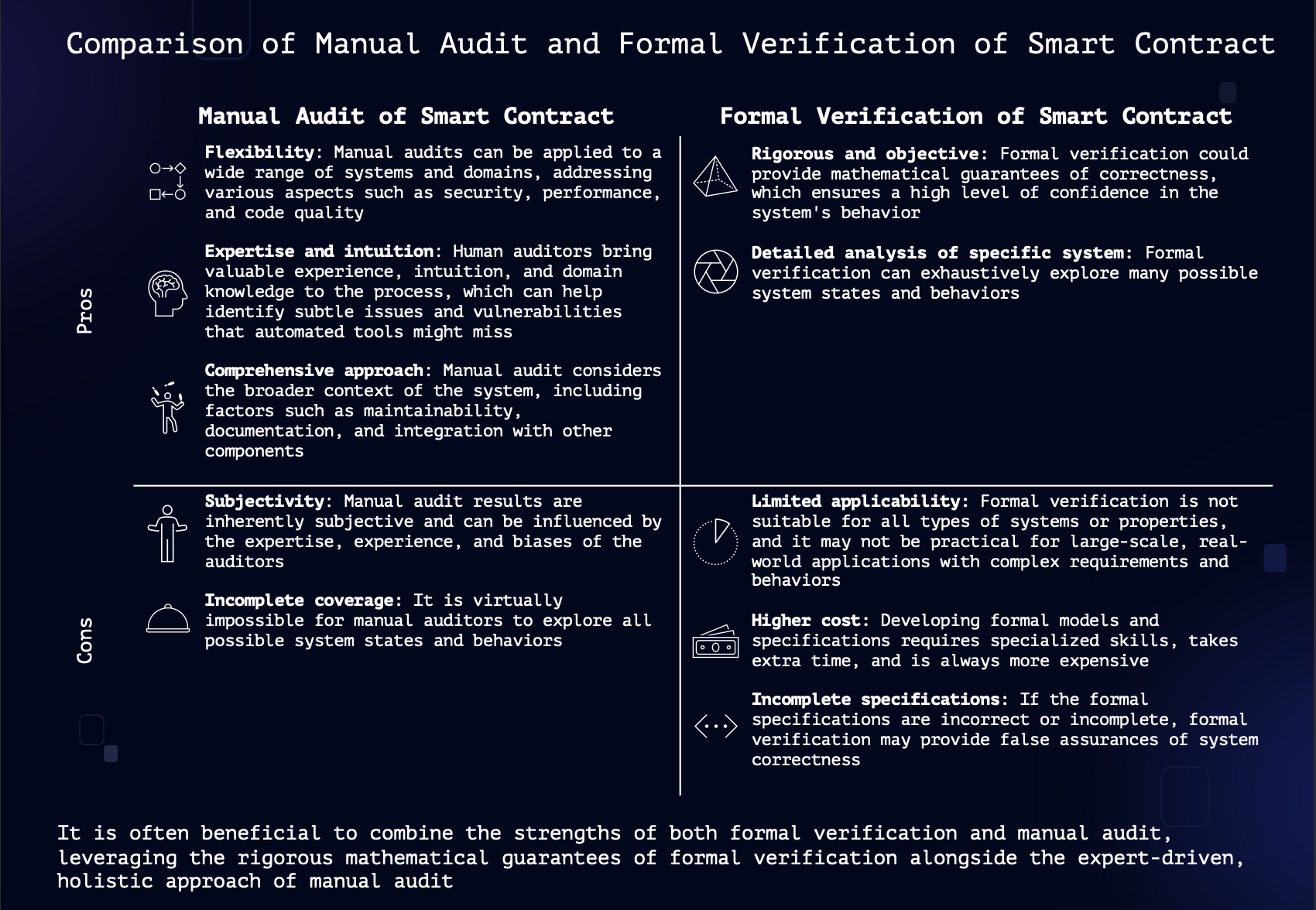Formal verification and manual audit are two approaches for ensuring the correctness, security, and reliability of software systems, such as smart contracts, embedded systems, and safety-critical applications. But there is a significant difference to discuss. Let’s start with Formal Verification.
Follow us on TWITTER and TELEGRAM
What is Formal Verification?
Formal verification is a rigorous, mathematical technique for proving or disproving the correctness of a system with respect to a formal specification. This involves using logic and mathematical models to check whether a given system satisfies a set of desired properties or behaviors. Formal verification can be applied to various types of systems, including hardware, software, and protocols. It is especially valuable in safety-critical applications or complex systems where errors can have catastrophic consequences.
Key Differences Between Formal Verification and Manual Audit
- Methodology: Formal verification uses mathematical models and logic to verify the correctness of a system, whereas manual audit relies on human experts who thoroughly examine the code, documentation, and system behavior to identify issues and vulnerabilities.
- Objectivity: Formal verification provides objective, deterministic results based on mathematical proofs, while manual audit results are more subjective and rely on the expertise, experience, and intuition of the auditors.
- Scope: Formal verification focuses on verifying specific properties or behaviors of a system, whereas manual audit covers a broader range of aspects, such as code quality, maintainability, security, and performance.
- Automation: Formal verification leverages automated tools and algorithms to perform the analysis, while manual audit is a human-driven process that typically involves code reviews, testing, and inspection.
Pros and Cons of Both Approaches
Here is a more detailed explanation to help you better understand the key pros and cons

If you want more about what is formal verification check this video:
Conclusion
Both formal verification and manual smart contract security audit processes offer unique advantages and challenges in ensuring the correctness, security, and reliability of software systems.
Despite the potential benefits of formal verification, for most real-life use cases, manual audit remains a critical and indispensable process. Human auditors can provide insights and understanding that automated tools cannot, addressing the broader context of the system. Moreover, manual audits can uncover subtle issues and vulnerabilities that formal verification might miss, due to its reliance on potentially incomplete or incorrect formal specifications.
In conclusion, while formal verification can provide valuable insights and increase confidence in the correctness of a system, manual audit remains an essential component of the software development process for most real-world applications. To achieve the highest level of assurance, it is often beneficial to combine the strengths of both formal verification and manual audit, leveraging the rigorous mathematical guarantees of formal verification alongside the expert-driven, holistic approach of a manual audit.
We are always happy to discuss your project security needs and bring more trust into Web 3.0 ecosystem. Send us an inquiry today!